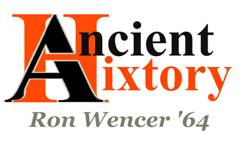
Last month, we saw how the Protectory sheltered boys in need, and helped them prepare for their futures. As the excerpt above suggests, however, Long Islanders have not always treated their needy neighbors very well. This month, we look at the complicated history of the Jones Institute, a local residence that cared for adults in need. Its origins can be traced back to early 1836, but we'll set the stage here by beginning the story a little earlier.
The tale is an old one. Within any given society, there are people who are not self-sufficient, people who need help in order to survive. Historically, societies generally have tried to help them - although more often, they really tried instead to "deal with the problem of poverty." Sometimes, governments assumed that most poor people simply don't want to work - and then implemented a one-size-fits-all approach, putting paupers into workhouses and poor farms, so that they might "learn how to help themselves" and pay their own way.
Thus, in 1818, before there was a Hicksville, the fine people of North Hempstead came up with the idea of leasing their impoverished neighbors to the lowest bidder, who would both "care for them" and use them as laborers for his or her personal gain. Not everyone thought this was wise or moral; indeed, a number of people protested that this "solution" reeked of slavery. Nonetheless, the plan was put into action.
***

